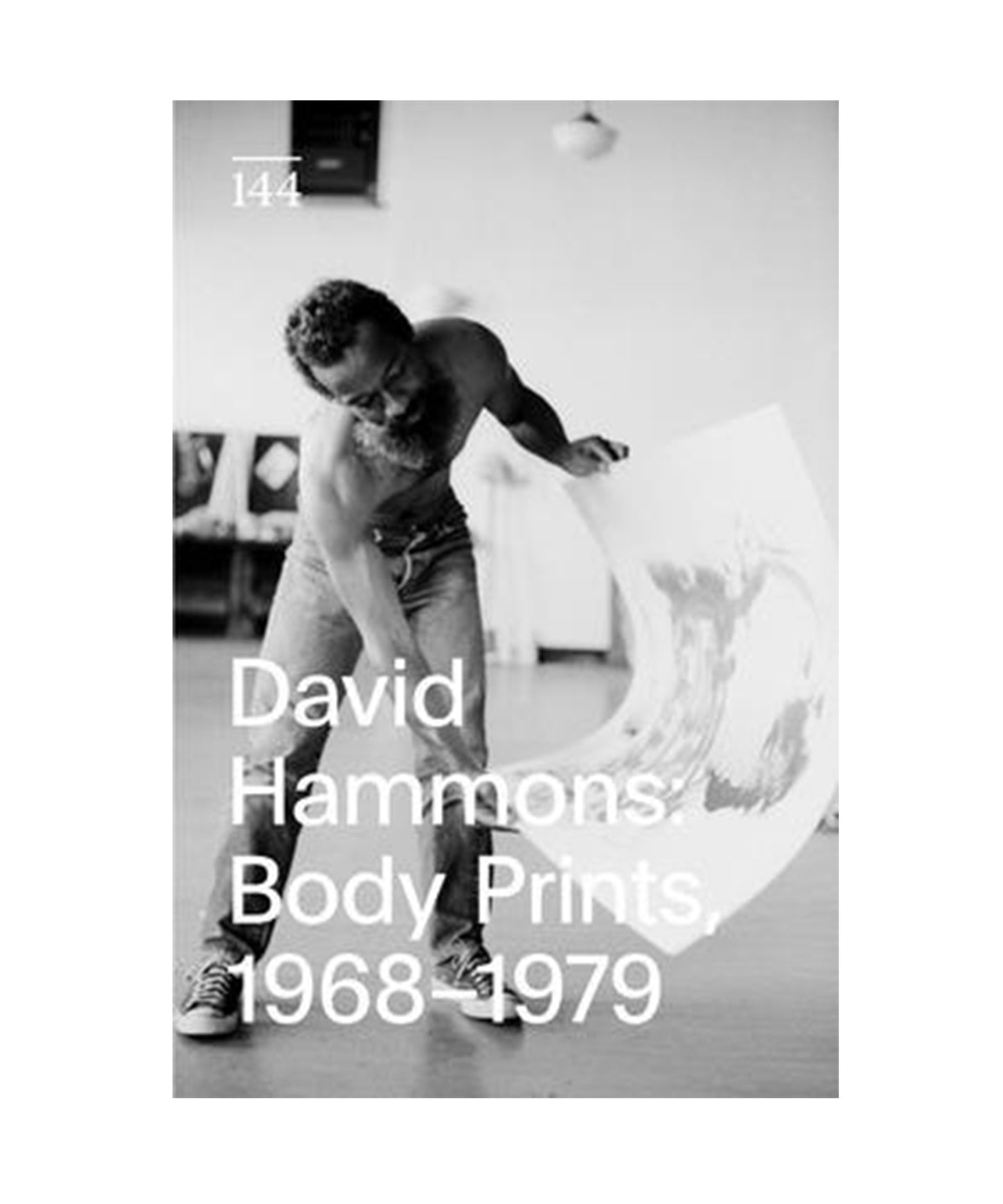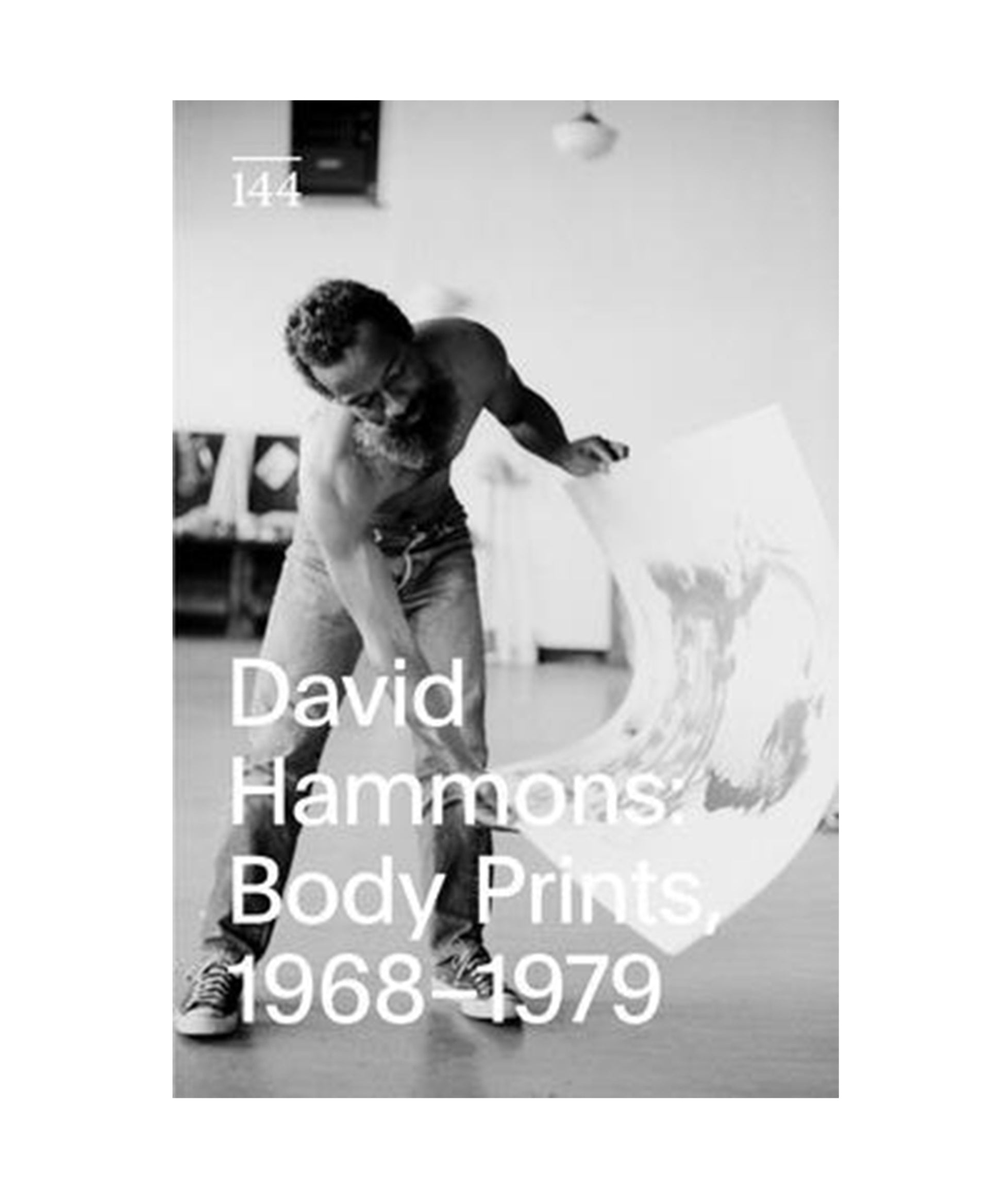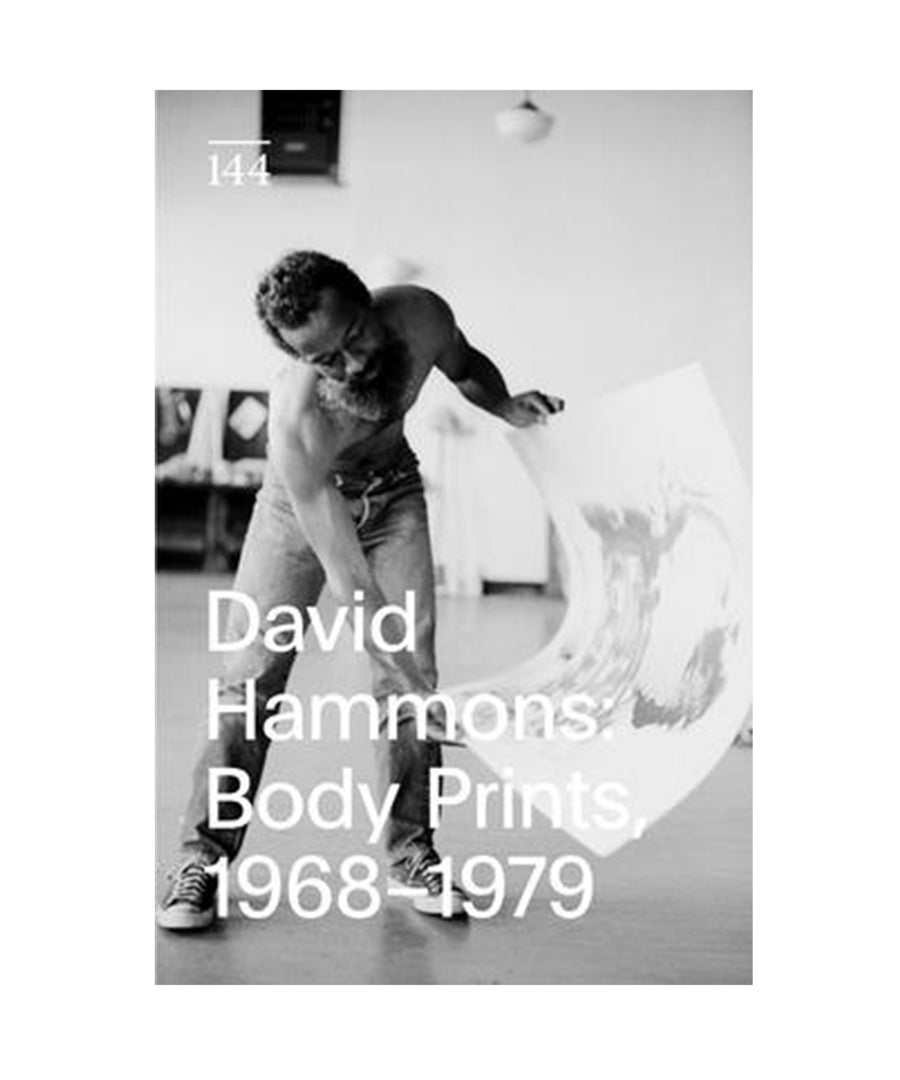David Hammons: Body Prints, 1968-1979
David Hammons: Body Prints, 1968-1979
On Hammons' seminal series that ingeniously merged print and performance, celebration and critique
The first book dedicated to these pivotal early works on paper, David Hammons: Body Prints, 1968-1979 brings together the monoprints and collages in which the artist used the body as both a drawing tool and printing plate to explore performative, unconventional forms of image-making. Hammons created the body prints by greasing his own body--or that of another person--with substances including margarine and baby oil, pressing or rolling body parts against the paper, and sprinkling the surface with charcoal and powdered pigment. The resulting impressions are intimately direct indexes of faces, skin, and hair that exist somewhere between spectral portraits and physical traces. Hammons' body prints represent the origin of his artistic language, one that has developed over a long and continuing career and that emphasizes both the artifacts and subjects of contemporary Black life in the United States.
More than a half-century after they were made, these early works on paper exemplify Hammons' celebration of the sacredness of objects touched or made by the Black body, and his biting critique of racial oppression. The body prints highlighted in this volume introduce the major themes of a 50-year career that has become central to the history of postwar American art. The book features a conversation between curator and activist Linda Goode Bryant and artist Senga Nengudi, as well as a photo essay by photographer Bruce W. Talamon, who documented Hammons at work in his Los Angeles studio in 1974.
Born in 1943 in Springfield, Illinois, David Hammons moved to Los Angeles in 1963 at the age of 20 and began making his body prints several years later. He studied at Otis Art Institute with Charles White and became part of a younger generation of Black avant-garde artists loosely associated with the Black Arts Movement. He moved to New York in 1978.
Binding Type: Paperback
Author: David Hammons, Laura Hoptman (Introduction by), Linda Goode Bryant (Interviewer)
Published: 03/30/2021
Publisher: Drawing Center
ISBN: 9780942324419
Pages: 144
Weight: 0.65lbs
Size: 8.90h x 5.90w x 0.50d
8.9" L x 5.9" W x 0.5" H
This item ships parcel via UPS, FedEx, or DHL, and a signature is required for packages valued over $200. Large quantities, however, may ship using one of our trusted freight carriers, for which a delivery appointment will need to be scheduled.
Please contact help@trnk-nyc.com with any additional questions regarding shipping or delivery.
- Description
- Dimensions
- Shipping Information
- Financing
- Reviews
- share
-
On Hammons' seminal series that ingeniously merged print and performance, celebration and critique
The first book dedicated to these pivotal early works on paper, David Hammons: Body Prints, 1968-1979 brings together the monoprints and collages in which the artist used the body as both a drawing tool and printing plate to explore performative, unconventional forms of image-making. Hammons created the body prints by greasing his own body--or that of another person--with substances including margarine and baby oil, pressing or rolling body parts against the paper, and sprinkling the surface with charcoal and powdered pigment. The resulting impressions are intimately direct indexes of faces, skin, and hair that exist somewhere between spectral portraits and physical traces. Hammons' body prints represent the origin of his artistic language, one that has developed over a long and continuing career and that emphasizes both the artifacts and subjects of contemporary Black life in the United States.
More than a half-century after they were made, these early works on paper exemplify Hammons' celebration of the sacredness of objects touched or made by the Black body, and his biting critique of racial oppression. The body prints highlighted in this volume introduce the major themes of a 50-year career that has become central to the history of postwar American art. The book features a conversation between curator and activist Linda Goode Bryant and artist Senga Nengudi, as well as a photo essay by photographer Bruce W. Talamon, who documented Hammons at work in his Los Angeles studio in 1974.
Born in 1943 in Springfield, Illinois, David Hammons moved to Los Angeles in 1963 at the age of 20 and began making his body prints several years later. He studied at Otis Art Institute with Charles White and became part of a younger generation of Black avant-garde artists loosely associated with the Black Arts Movement. He moved to New York in 1978.
Binding Type: Paperback
Author: David Hammons, Laura Hoptman (Introduction by), Linda Goode Bryant (Interviewer)
Published: 03/30/2021
Publisher: Drawing Center
ISBN: 9780942324419
Pages: 144
Weight: 0.65lbs
Size: 8.90h x 5.90w x 0.50d -
8.9" L x 5.9" W x 0.5" H
-
This item ships parcel via UPS, FedEx, or DHL, and a signature is required for packages valued over $200. Large quantities, however, may ship using one of our trusted freight carriers, for which a delivery appointment will need to be scheduled.
Please contact help@trnk-nyc.com with any additional questions regarding shipping or delivery.
- Liquid error (snippets/product-tab line 457): include usage is not allowed in this context

What does this mean?
"Estimated ship date" refers to the date in which the product leaves our warehouse. Please allow additional up to 7 additional business days for delivery to your residence.
Parcel packages ship UPS ground and signature is required for packages valued over $200. For a precise estimated delivery date, please contact us at customerservice@trnk-nyc.com.
Read More about our shipping policy.
Return Policy
We are able to accept returns on certain items, as messaged on the product detail page, located in the “Returns” section.
Items marked “refundable” can be returned (in their original, undamaged condition) within 14 days of delivery. If you choose a return for store credit, return shipping is free! If you would like a return to your original form of payment, we charge a restocking fee equal to 15% of the item’s full retail price before discounts or promotions. In either case, we do not reimburse for the original cost of shipping.
Read More about our return policy.
Quickship Options
We stock a limited selection of our TRNK Collection products as quickship options, which are available with a much shorter lead time.
TRNK Collection Pillows
Information about the pillows

